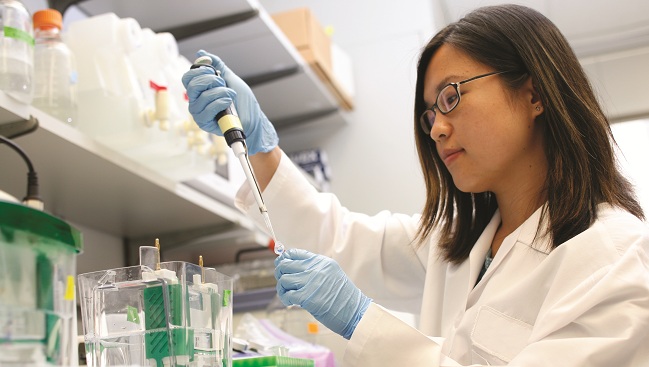Societal Impact of Neuroscience Research in the United States
- Published22 Sep 2010
- Reviewed22 Sep 2010
- Source BrainFacts/SfN

Health and Discovery
Research provides the vital foundation for the nation’s science and technology portfolio and drives discovery that transforms medicine, improves treatments, and will one day lead to cures.
- More than 1,000 neurological and neurodegenerative diseases affect the lives of the nearly 100 million Americans.
- Basic research enables the pursuit of treatments to prevent and delay debilitating illnesses and to improve preventive and public health practices worldwide.
- Research in fields such as chemistry, physics, and computer science lays the foundation for advances in neuroscience.
- Federally funded work has enabled the development of new technologies, such as green fluorescent protein, that have revolutionized neuroscience research.
Economic Growth and Prosperity
Fundamental research is an investment in our country’s future, reducing health-care costs, supporting quality jobs, and increasing economic activity.
- Neurological illnesses and mental disorders cost the U.S. more than $760 billion each year. The only way to decrease these costs is to improve treatments.
- Every dollar of research money from NIH generates approximately $2.21 in economic output. One dollar of research money from NSF generates approximately $2 in economic output.
- In FY2011, NIH funding led to the creation of nearly 430,000 quality jobs and produced $62 billion in economic activity.
- Economists agree that about 50 percent of economic growth is from research and development.
- Scientific discovery leads to new business. There were 671 university research spinoff companies formed in 2011.
The Future of the Scientific Enterprise
Many of today’s discoveries were unimaginable less than a decade ago. A strong commitment to research leads to innovative medical advances.
- The substantial lag time between discovery and profitability prevents businesses from conducting the fundamental science needed to translate discoveries into practical treatments.
- Without a strong workforce, we are jeopardizing the future of U.S. competitiveness. The percentage of scientists under age 36 who are NIH primary investigators has dropped from 18 percent to 3 percent since 1982.
- The scientific enterprise depends on consistency. Dramatic swings in resources are disruptive to scientific progress and threaten our national investment as even long-established labs become vulnerable to closure.
- U.S. global leadership in biomedical research is at risk. The percent share of biomedical research expenditures in the U.S. is falling while other countries are increasing their investment in science.
- Research drives innovation by investing in high-risk, cutting-edge science and engineering at the frontiers of knowledge.
CONTENT PROVIDED BY
BrainFacts/SfN
Also In Archives
Trending
Popular articles on BrainFacts.org

















